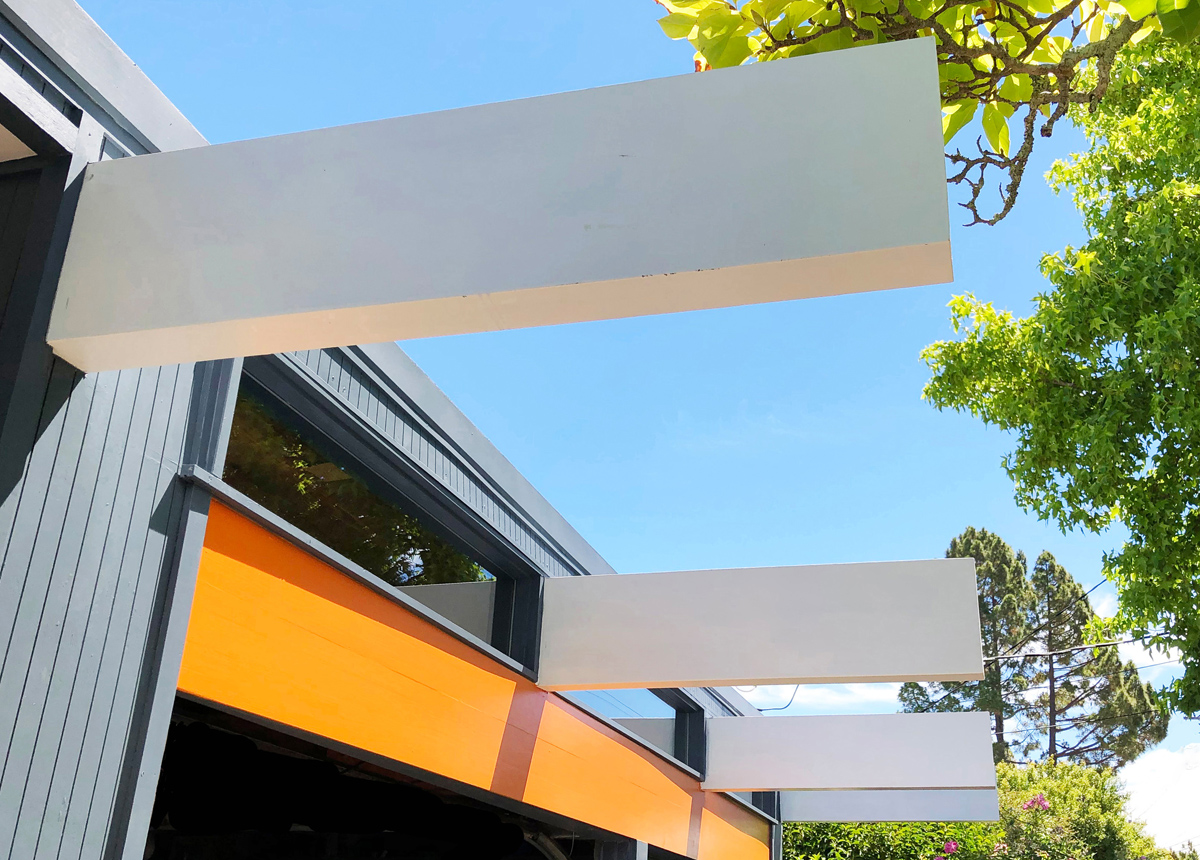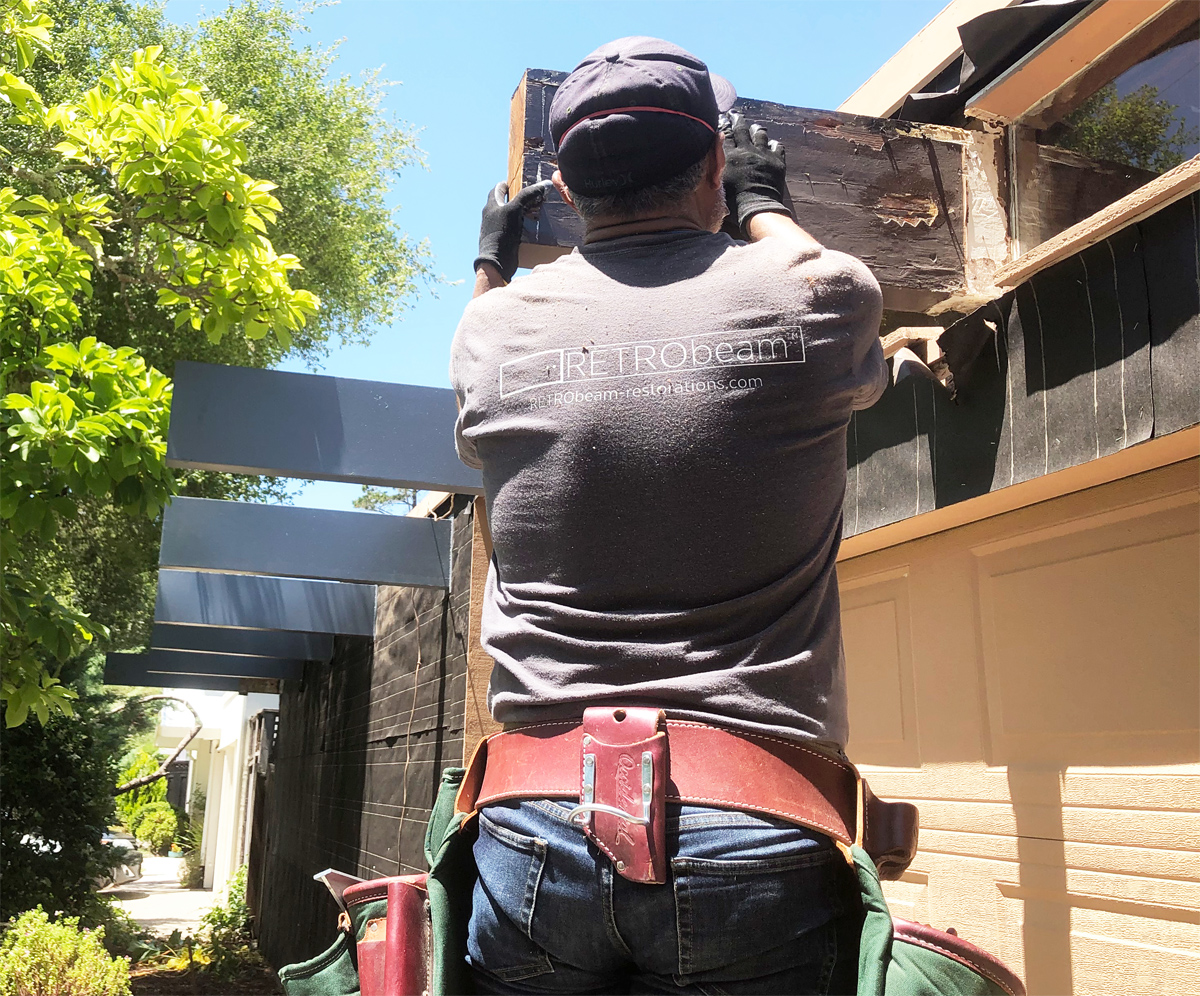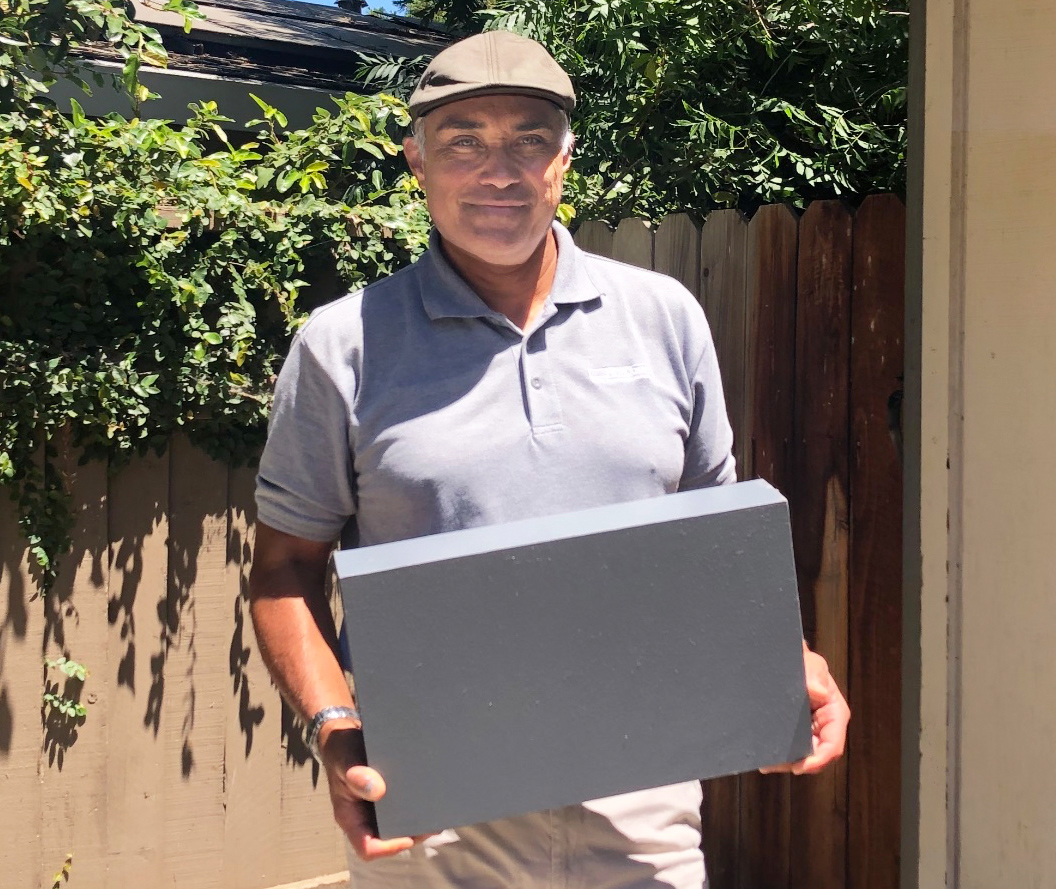Ace Pair Tops Beam Repair
 |
|
|
"The woods decay, the woods decay and fall," quoth the poet Tennyson, and that was the ominous point that led to the publication of one of the most popular Eichler Network feature articles ever on Eichler and Streng home improvement, 'Those Dirty Rotten Beams.'
That classic how-to tale detailed how vulnerable to decay exterior overhead beams are in 60-year-old, post-and-beam construction.
"Eichlers are impacted mostly in outside atriums and carports, while Streng homes are hit in their overhangs," feature writer Tanja Kern reported back then, adding, "Dry rot is the weakening of wood caused by fungus, which digests parts of the wood…[but] it all starts with excessive moisture."
One topic not covered in that invaluable story was beam extremities. What does one do when rot is confined to only the end region of a beam? How does an Eichler or Streng homeowner restore those important lost inches of vital integrity and aesthetics onto the end of a corrupt or chopped-off beam?
 |
Fortunately for mid-century modern homeowners, we found two wise and seasoned contractors who offer distinctly different solutions for capping failed beam endings—solutions that generally clock in at about $700 a beam, sometimes less. Both are based in the Sacramento area.
"Usually the damage starts at the very top, at the connection to the fascia tile above the beam," explains Adam Ramirez of Davis-based RETRObeam Restorations. "Some are very obvious, some are just starting to decay."
"If some of them look good, then we'll get a ladder out, and I'll see what's going on," says Joe Gomes of Joe Gomes Construction, based in Sacramento. He adds of the diagnosis phase of beam repair, "Most of the time it's just visual; you don't even need to get up on a ladder."
While similar in this phase, from there the two companies diverge in their approach to restoring the visual and structural integrity of a modern home. For Gomes, one key to replacing the rotted end of a beam is in choosing a good piece of wood.
 |
"Never use new wood to put together with old wood," he states of working on a mid-century home, noting that the newer material will often shrink with age and fail to maintain its proper connection with the existing beam. Of course, old-growth lumber is hard to come by in this day and age, but Gomes has his sources.
"They're still out there; you just need to know the places to look," says the second-generation contractor, noting that he visits lumber reclamation centers hunting for used headers. "Basically, you're looking for the perfect piece of wood…because it's got to look perfect when you put it on someone's house."
Noting that the repair generally costs between $400 and $700 per beam, Gomes provides a separate cost for each one that needs work, adding, "I evaluate every project as to how much it needs to be repaired. They're individually priced depending on what needs to be done."
Alternatively, repairs in RETRObeam's projects generally consist of replacing the last two feet of a beam, with one important difference: Ramirez uses custom-made, hollow metal extensions for each rotted ending. These pieces cost a uniform $700 unless more than two feet are needed, in which case they run $75 for each additional foot.




